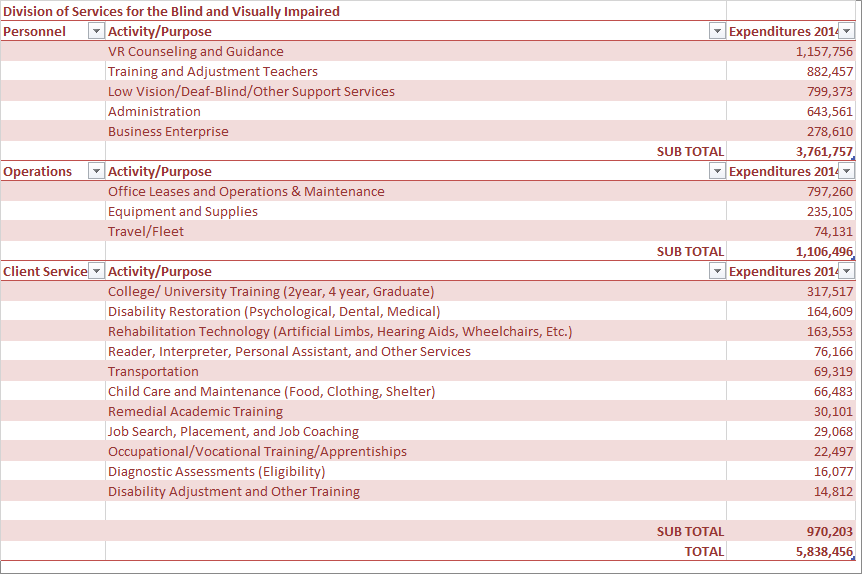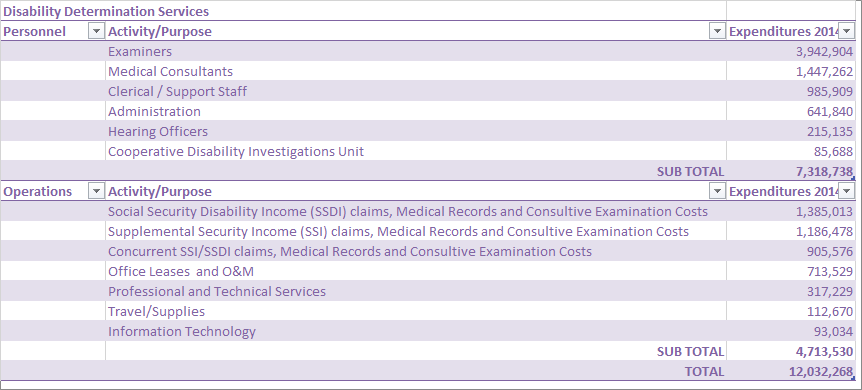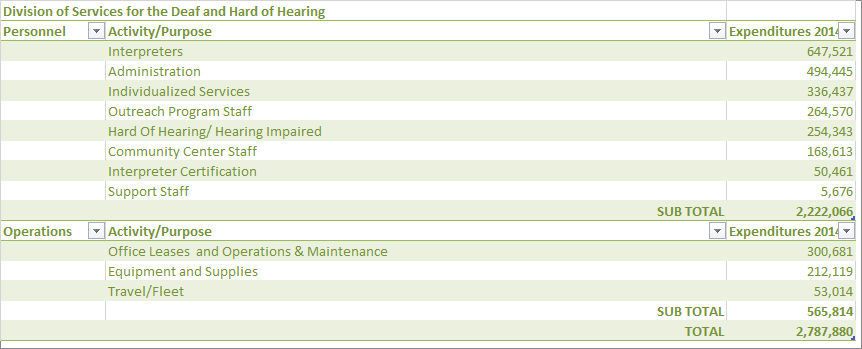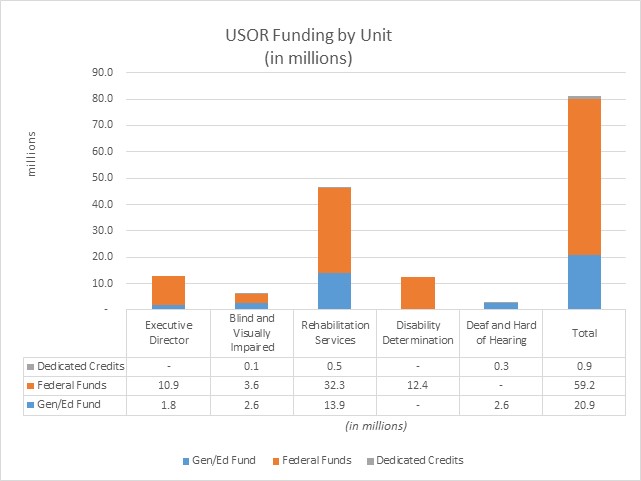The Utah State Office of Rehabilitation (USOR), under the direction of the State Board of Education, operates programs designed to assist individuals with disabilities to prepare for and obtain gainful employment as well as increase their independence. USOR contains a single line item and multiple programs, including an Executive Director's Office and four operating divisions: Services to the Blind and Visually Impaired, Rehabilitation Services, Disability Determination Services, and Services to the Deaf and Hard-of-Hearing. USOR provides tailored services focusing on the needs, interests, abilities, and informed choices of the individuals served. USOR provides direct rehabilitative client services through an array of professional positions, and works in concert with other community service and resource providers to offer support services throughout the state. Services are provided upon determination of eligibility for such. Eligibility requirements differ depending upon the division or services desired. In general, eligibility is based upon patrons having a physical or mental impairment that constitutes a substantial need in order to attain independence and/or gainful employment. State law requires a financial needs test to determine the extent to which a client may receive services.
During the 2015 General Session, the Legislature appropriated for Fiscal Year 2016, $81,403,800 from all sources for State Office of Rehabilitation. This is an 8.3 percent reduction from Fiscal Year 2015 revised estimated amounts from all sources. The total includes $22,252,700 from the General/Education Funds, a reduction of 20.3 percent from revised Fiscal Year 2015 estimates.
In addition to statewide compensation and internal service fund cost increases, the following appropriation adjustments were made during the 2015 General Session:
Separate tables are shown under the tab labeled "Financials" in each COBI section. These tables provide information regarding: 1) funding sources (where the money comes from), 2) standardized state expenditure categories (where the money goes), and 3) agency sub-programs (when viewed at the line item level). For the most recent completed fiscal year, the following information represents the purposes for which the money was used:







The State Office of Rehabilitiation has one appropriations line item with five individual programs.
The Smith-Fess Act authorizing the state-federal vocational rehabilitation program was passed by Congress and signed into law in 1920. The program officially opened in Utah in 1921. The Utah State Office of Rehabilitation was created during the 1988 Legislative session under the direction of the State Board of Education and State Superintendent of Public Instruction. Prior to 1988 two separate departments, the Division of Rehabilitation Services and the Division of Services for the Blind and Visually Impaired, existed as separate divisions under the Utah State Office of Education. The Division of Services for the Deaf and Hard of Hearing was established to provide a community center, as well services to meet independent living, educational and community integration services with state funding, while the Disability Determination Services provides adjudication and review of Social Security benefits for people with disabilities and if completely federally funded.
Two primary sources provide revenue for USOR. The largest contributor is the federal government, providing approximately 76 percent of total USOR revenues in FY 2013. In addition to federal funds, USOR receives a significant appropriation from state funds. Education Fund revenues, along with a small amount of state General Fund, account for roughly 23 percent of the total appropriation. In addition to state and federal resources, the office collects dedicated credits generated primarily through fees and the sale of services, goods and materials. For analysis of current budget requests and discussion of issues related to this budget click here.
COBI contains unaudited data as presented to the Legislature by state agencies at the time of publication. For audited financial data see the State of Utah's Comprehensive Annual Financial Reports.